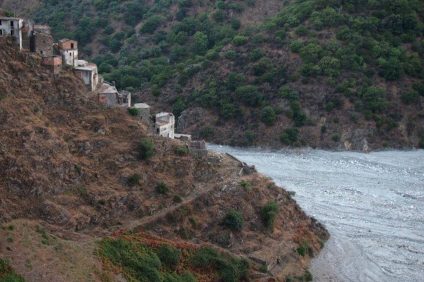Sesto al Réghena is a charming village rich in history, located in the heart of the Veneto-Friuli plain, on the border with the Province of Venezia. Just over 6 thousand inhabitants, struggling every year with a large number of tourists. Such an intriguing and original place cannot fail to be stormed by visitors. It is no coincidence, in fact, if it finds space in the list of Most beautiful villages in Italy.
Sesto al Réghena, where the name comes from
At the time it was a Roman military station, which owes its name to its location. It was in fact located at the sixth milestone of the road that connected Iulia Concordia with the Norico. Reghena, on the other hand, is soon explained, being the name of the river that crosses the village. One therefore wonders where the toponym of the watercourse comes from. It seems this is from pre-Roman times, and that it has its roots in the Celtic tradition: bear (torrent).
Sesto al Réghena, the land of the abbots
This particular denomination has accompanied Sesto al Réghena for a long time. The reason is quickly explained. The history of the village is deeply intertwined with that of the monastic community. One of the places to visit absolutely is in fact theAbbey of Santa Maria in Silvis. Founded between 730 and 735, during the Lombard period. It is one of the most important monastic institutions in Friuli. The path to reach the Abbey sees tourists pass in front of the Grimani Tower, from the Renaissance period, another treasure of the area.

In 899 the Abbey was attacked by the Hungarians, who disfigured it. However, it returned to new life during the 1786th century, when it was also fortified. It was a commendation until 1921 and returned to being an abbey in XNUMX. There are many precious objects inside, among which the vestibule, totally frescoed by cycles of Hell, Paradise and San Michele, stands out. Works dating back to the XNUMXth century, attributed to the workshop of Antonio da Firenze.
Get inspired
The surroundings of this splendid village offer the possibility of making a large number of excursions for enthusiasts. How not to be amazed by admiring the Burovich meadows and Premarine Lake. Location located just outside the village, a few hundred meters, walking west.
There is a great abundance of floral and tree essences. A natural landscape but with a small artificial intervention. The lake, in fact, is the result of excavations carried out in the 70s, which allowed the waters gushing from the subsoil to flow into the hole, creating a lake basin.

Being in contact with nature is one of the main activities of this vast area. Particularly close to the village there is Villa Fabris. The landscape knows how to capture the gaze, with a passionate eye that will be able to appreciate the rural landscape, which highlights the Roman centuriation of the Concordia countryside, present in some areas.
Another clear stage is that at mill of Stalis, located on the ford between Fiuli and Veneto. How to miss a visit to the Church of San Pietro, To Bagnarola sawmill in Borgo Siega. The last stop on this tour in the surrounding area is the Venchieredo Fountain, celebrated by Ippolito Nievo in "The Confessions of an Italian".
What to eat
Certainly there is no shortage of typical dishes from Sesto al Réghena and the surrounding area. There are Carnic agnolotti, which is a mixture of potatoes, apples, pears, biscuits, parsley, molasses, basil, mint, marjoram, raisins, ricotta, chocolate, plum jam, sugar and cinnamon. The list is quite extensive, from creamed cod to cabbage with cracklings, from giambars, or shrimp fried with marjoram, basil, oil and parsley, to fasoi and frumenton, or well flavored beans and wheat grains.
Photo source: Sesto al Réghena - facebook.com/comune.sestoalreghena





